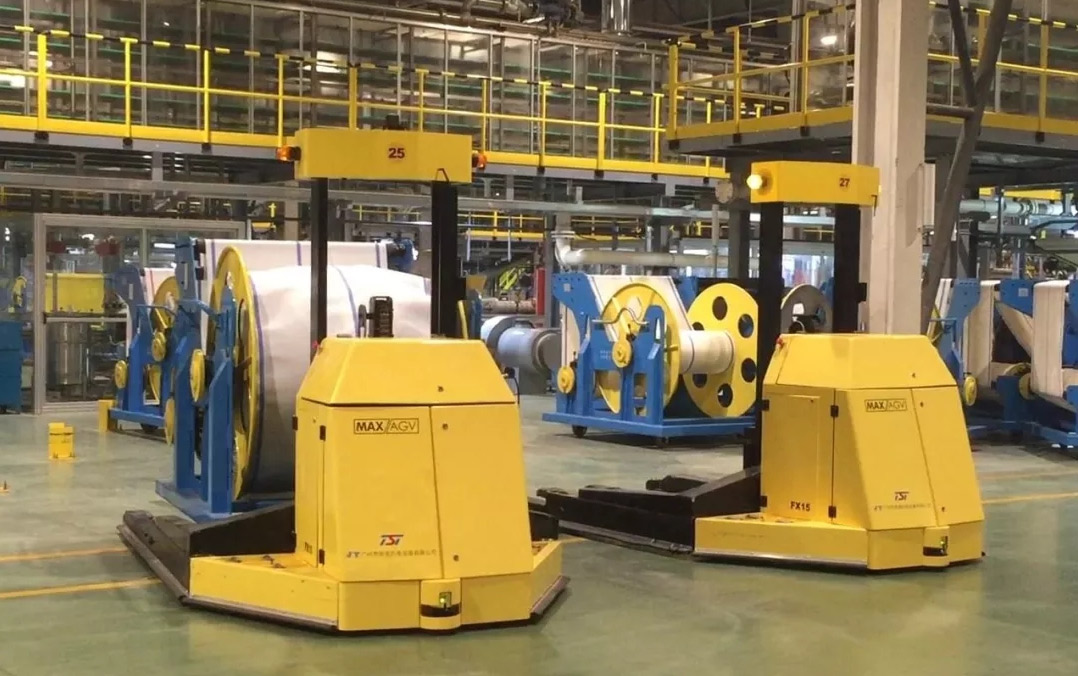 Call at :
+86 18681515767
Call at :
+86 18681515767
 Email :
marketing@jtspeedwork.com
Email :
marketing@jtspeedwork.com
 Call at :
+86 18681515767
Call at :
+86 18681515767
 Email :
marketing@jtspeedwork.com
Email :
marketing@jtspeedwork.com
Application of RFID technology to automated assembly line based on AGV robots

Automated assembly line has become an important part of modern industrial production, and its operation efficiency and quality directly affect the production cost and market competitiveness. In the traditional assembly production line, it needs a lot of labor and material input, and the production efficiency is low and the precision is difficult to guarantee. In order to solve these problems, automated assembly lines have been widely used, among which AGV robots are an important automated assembly equipment.AGV robots have been widely used in various automated assembly lines because of their advantages of flexible operation, etc. The drive system of AGV robots is mainstreamed by the structure of driving wheels+follower wheels, which is capable of effectively dragging the heavy loads to run autonomously and smoothly with millimeter-level precision. Autonomous and smooth operation. However, in actual production, due to the complexity of the robot itself, as well as the influence of other equipment in the production line, the efficiency and reliability of the assembly line still have a lot of problems, and need to be further studied and optimized.
RFID technology, specifically UHF (Ultra-High Frequency) RFID, plays a crucial role in the functionality of AGV (Automated Guided Vehicle) robots. UHF RFID technology enables AGV robots to navigate, communicate, and perform tasks efficiently within various industrial and commercial environments. AGV robots are equipped with UHF RFID long-range readers, WiFi RFID readers, RFID UHF reader USB, and RFID gate readers, which facilitate seamless integration and operation within diverse settings.
At its core, UHF RFID technology consists of tags and readers. RFID tags, which are attached to objects or embedded in the environment, contain electronically stored information. These tags can be active (powered by a battery) or passive (powered by the RFID reader's signal). The UHF RFID readers, located on the AGV robots, emit radio waves to communicate with the tags and retrieve the stored information.
In the context of AGV robots, UHF RFID technology is utilized for several key functions:
Navigation: UHF RFID tags placed on the floor or at specific locations within a facility serve as navigation markers for AGV robots. As the robot moves, its onboard UHF RFID long-range reader detects the tags and uses the information to determine its location and navigate along predetermined paths or to specific destinations.
Object identification and tracking: UHF RFID tags attached to inventory, materials, or products allow AGV robots to identify and track items throughout the facility. This enables efficient material handling, inventory management, and order fulfillment processes.
Communication and coordination: UHF RFID technology, including WiFi RFID readers and RFID gate readers, facilitates communication and coordination between multiple AGV robots operating within the same environment. By reading UHF RFID tags and exchanging data, the robots can avoid collisions, optimize routes, and synchronize their movements to streamline operations.
Automation and control: AGV robots use UHF RFID technology to interact with automated systems, such as conveyor belts, loading docks, and inventory storage systems. This integration enables seamless material flow and enhances the overall efficiency of the logistics and manufacturing processes.
In summary, UHF RFID technology empowers AGV robots with the intelligence and capabilities needed to operate autonomously and effectively within diverse industrial settings. By leveraging UHF RFID for navigation, object identification, communication, and automation, AGV robots contribute to increased productivity, streamlined workflows, and enhanced operational agility.
Categories
New Blog
Copyright © 2025 Shenzhen Jietong Technology Co.,Ltd. All Rights Reserved.

IPv6 network supported